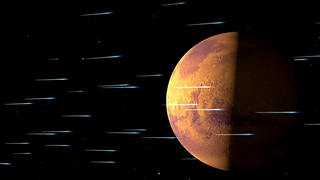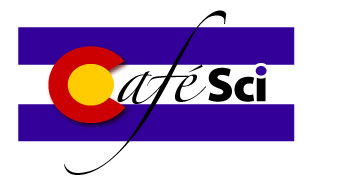About the topic
Bio
Get the Flyer (PDF)
About the topic
From NASA:
The Mars Atmosphere and Volatile Evolution Mission, or MAVEN, will travel to the Red Planet in November 2013 with instruments designed to answer specific questions about the planet's atmosphere, and one instrument will help piece together the bigger picture.
The Imaging Ultraviolet Spectrograph, IUVS for short, designed and built at the University of Colorado Boulder's Laboratory for Atmospheric and Space Physics, known as LASP, will measure Mars' global atmosphere to help solve the mystery of how the planet became frozen and barren.
 Although the human eye can't detect it, all planetary atmospheres glow at ultraviolet wavelengths. The IUVS will reveal the gases present in Mars' upper atmosphere by separating their emissions by their wavelengths, causing them to appear in different colors to the instrument.
Although the human eye can't detect it, all planetary atmospheres glow at ultraviolet wavelengths. The IUVS will reveal the gases present in Mars' upper atmosphere by separating their emissions by their wavelengths, causing them to appear in different colors to the instrument.
"IUVS studies the upper atmosphere as though it were looking through a prism, separating the colors which indicate what gases are present at what level," said Nick Schneider, IUVS lead scientist at LASP, Boulder, Colo.
As MAVEN's other instruments are designed to measure the immediate surroundings, the ability IUVS has to measure the planet's atmosphere on a global scale allows it to act as the eyes of the spacecraft.
"As the other instruments measure local conditions around the spacecraft, it's important to know how those compare to the planet as a whole," Schneider said. "Our observations place those changes in the context of the whole planet."
In addition, IUVS will infer the escape rates of electrically neutral gases like hydrogen and oxygen from the upper atmosphere. This data would provide important insight into how the Mars atmosphere has changed.
"Determining how much hydrogen and oxygen, which enter the atmosphere through the breakup of water and carbon dioxide, is leaving the planet today is key to understanding the evolution of the atmosphere over time," said LASP IUVS instrument lead Bill McClintock.
One of the most significant properties of the Martian atmosphere that the IUVS will measure is the ratio of the element deuterium, also known as heavy hydrogen, to regular hydrogen. Both are products of broken water molecules and can reveal how much water has escaped from Mars' atmosphere over time.
"Mars may have been covered by oceans and lost the hydrogen and oxygen to space, or Mars may have always been relatively dry," Schneider said. "These two scenarios result in very different [deuterium-hydrogen] ratios; in the first case, D/H is much larger than we see at Earth, and in the second, they're about the same."
While the instrument measures the gases in the planet's upper atmosphere, it will also be able to identify changes in the planet's lower atmosphere - like dust storms - below the reach of other MAVEN instruments. The method uses stellar occultations, in which stars pass behind Mars as observed from the spacecraft as it orbits Mars. As a star rises or sets behind the thin atmosphere, gases will again leave their spectral signature in the data, revealing the composition, structure and density of the atmosphere.
As MAVEN's instruments work together to fill in the pieces of Mars' atmospheric loss, IUVS will play a key role.
"I think the most important role that IUVS will play, or at least the unique role, is that IUVS will provide a more global view of the Mars atmosphere than the other instruments can," said Mark Lankton, LASP project manager. "IUVS covers a broad area on each orbit, and as the mission progresses we will build those areas into a global picture."
Bio
 Nick Schneider is an associate professor in the Department of Astrophysical and Planetary Sciences at the University of Colorado and a researcher in the Laboratory for Atmospheric and Space Physics. He received his Ph.D. in planetary science from the University of Arizona in 1988. His research interests include planetary atmospheres and planetary astronomy, with one focus on the odd case of Jupiterís moon Io. He is also the lead on the Imaging UltraViolet Spectrograph on the upcoming MAVEN mission to Mars. He enjoys teaching at all levels and is active in efforts to improve undergraduate astronomy education. Off the job, he enjoys exploring the outdoors with his family and figuring out how things work.
Nick Schneider is an associate professor in the Department of Astrophysical and Planetary Sciences at the University of Colorado and a researcher in the Laboratory for Atmospheric and Space Physics. He received his Ph.D. in planetary science from the University of Arizona in 1988. His research interests include planetary atmospheres and planetary astronomy, with one focus on the odd case of Jupiterís moon Io. He is also the lead on the Imaging UltraViolet Spectrograph on the upcoming MAVEN mission to Mars. He enjoys teaching at all levels and is active in efforts to improve undergraduate astronomy education. Off the job, he enjoys exploring the outdoors with his family and figuring out how things work.
